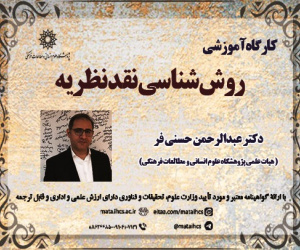Examination and Analysis of the Reasons for Rejecting the Popular Claim Regarding the Position and Order of Revelation of Surah al-Qalam (مقاله علمی وزارت علوم)
درجه علمی: نشریه علمی (وزارت علوم)
آرشیو
چکیده
Dating or arranging the surahs according to their order of revelation has long been considered, at least to the extent of identifying them as Meccan or Medinan. However, it has not received much attention in traditional Tafsir (exegesis). Today, descending (Tanzīlī) exegesis, relying on methods other than the customary reliance on narrations of the order of revelation, has attracted the attention of Quranic researchers to facilitate a better understanding of the Quran. Accordingly, the present study, using a descriptive-analytical method, aims to investigate the date of revelation of Surah al-Qalam, considered the second revealed surah according to narrations of the order of revelation. This will be done by examining the surah's content and style, comparing it to the stages of Quranic revelation in terms of the arrangement of the Prophet's call, and referencing historical documents and the Prophet's biography (Sīrah). The findings indicated that this surah depicts an atmosphere of a period of revelation that is incompatible with the early period of the Prophet's mission and his cautious call, and its position as the second revealed surah. Therefore, considering the content analysis and stylistic features of the surah, as well as supporting historical evidence regarding the use of various methods by opponents to express their opposition and hostility towards the Prophet, and comparing these with the verses revealed in surahs al-Shuʻarāʼ and al-Aʻrāf onwards, and based on a comparison that shows historical similarities between surah al-Qalam and Surahs Yāsīn, al-Furqān, and al-Isrāʼ, it seems that the approximate date of revelation of this surah is during the second phase of the Prophet's mission, after the cautious call and after surahs al-Anʻām and al-Ṣāffāt, but very close to themبررسی و تحلیل دلایل عدم پذیرش قول مشهور در تعیین جایگاه و ترتیب نزول سوره قلم
تاریخ گذاری یا توجه به چینش سوره ها به ترتیب نزول، از دیرزمان، در حدّ مکی و مدنی بودن مورد توجه بوده است اما در تفسیر، چندان مورد اعتنا قرار نمی گرفت؛ امروزه تفسیر تنزیلی با استناد به روش هایی به جز شیوه مرسوم تکیه بر روایات ترتیب نزول، توجه قرآن پژوهان را جهت آسان تر کردن فهم قرآن جلب نموده است. بر همین اساس، پژوهش حاضرکوشیده تا با اتخاذ روش توصیفی تحلیلی، تاریخ نزول سوره قلم را طبق روایات ترتیب نزول و به عنوان دومین سوره نازل شده؛ براساس محتوا و سبک بیانی سوره و تطبیق آن با مراحل نزول قرآن به لحاظ چیدمان دعوت پیامبر و مستندات تاریخی و سیره عصر نبوی مورد کنکاش قرار دهد. یافته ها نشان می دهد؛ این سوره، فضایی از دوران نزول را ترسیم می کند که نمی تواند با دوره آغاز بعثت پیامبر و دعوت محتاطانه ایشان و دومیبن سوره نازله سازگار باشد. بنابراین، با لحاظ تحلیل محتوایی و سبک بیانی سوره و نیز تایید مستندات تاریخی مبنی بر کاربست روش های متعدد اعلام مخالفت و دشمنی مخالفین با حضرت و تطبیق آنها بر آیات نازل شده در سور ص و اعراف به بعد و نیز براساس تطبیقی که حکایت از وجود مشابهات تاریخی سوره قلم با سور یس، فرقان و اسراء دارد، به نظر می رسد تاریخ نزول تقریبی این سوره، در دور دوم بعثت یعنی بعد از دعوت محتاطانه پیامبر و بعد از سور انعام و صافات اما بسیار نزدیک به آنها باشد.







